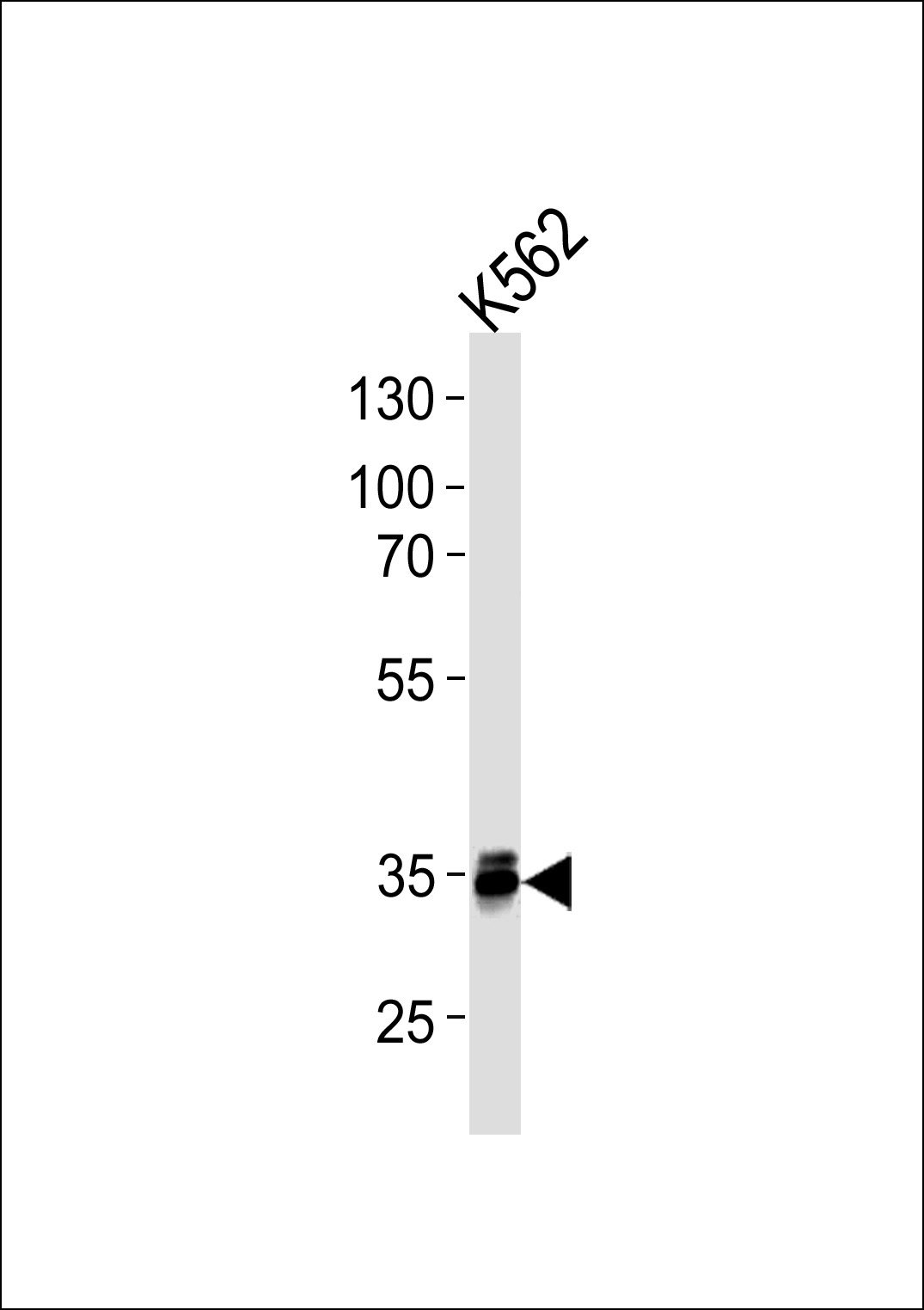MBD3 Antibody (C-term)
Mouse Monoclonal Antibody (Mab)
- SPECIFICATION
- CITATIONS: 1
- PROTOCOLS
- BACKGROUND

Application
| WB, E |
|---|---|
| Primary Accession | O95983 |
| Reactivity | Human |
| Host | Mouse |
| Clonality | Monoclonal |
| Isotype | IgG1 |
| Clone/Animal Names | 995CT3.2.2 |
| Calculated MW | 32844 Da |
| Gene ID | 53615 |
|---|---|
| Other Names | Methyl-CpG-binding domain protein 3, Methyl-CpG-binding protein MBD3, MBD3 |
| Target/Specificity | Purified His-tagged MBD3 protein was used to produced this monoclonal antibody. |
| Dilution | WB~~1:1000 E~~Use at an assay dependent concentration. |
| Format | Purified monoclonal antibody supplied in PBS with 0.09% (W/V) sodium azide. This antibody is purified through a protein G column, followed by dialysis against PBS. |
| Storage | Maintain refrigerated at 2-8°C for up to 2 weeks. For long term storage store at -20°C in small aliquots to prevent freeze-thaw cycles. |
| Precautions | MBD3 Antibody (C-term) is for research use only and not for use in diagnostic or therapeutic procedures. |
| Name | MBD3 |
|---|---|
| Function | Acts as a component of the histone deacetylase NuRD complex which participates in the remodeling of chromatin (PubMed:12124384, PubMed:16428440, PubMed:28977666). Acts as transcriptional repressor and plays a role in gene silencing (PubMed:10947852, PubMed:18644863). Does not bind to methylated DNA by itself (PubMed:12124384, PubMed:16428440). Binds to a lesser degree DNA containing unmethylated CpG dinucleotides (PubMed:24307175). Recruits histone deacetylases and DNA methyltransferases. |
| Cellular Location | Nucleus. Chromosome. Note=Nuclear, in discrete foci. Detected on chromatin, at promoter regions of active genes |

Provided below are standard protocols that you may find useful for product applications.
Background
Does not bind DNA by itself. Recruits histone deacetylases and DNA methyltransferases. Acts as transcriptional repressor and plays a role in gene silencing.
References
Hendrich B., et al. Mol. Cell. Biol. 18:6538-6547(1998).
Ota T., et al. Nat. Genet. 36:40-45(2004).
Grimwood J., et al. Nature 428:529-535(2004).
Mural R.J., et al. Submitted (SEP-2005) to the EMBL/GenBank/DDBJ databases.
Tatematsu K., et al. Genes Cells 5:677-688(2000).
If you have used an Abcepta product and would like to share how it has performed, please click on the "Submit Review" button and provide the requested information. Our staff will examine and post your review and contact you if needed.
If you have any additional inquiries please email technical services at tech@abcepta.com.














 Foundational characteristics of cancer include proliferation, angiogenesis, migration, evasion of apoptosis, and cellular immortality. Find key markers for these cellular processes and antibodies to detect them.
Foundational characteristics of cancer include proliferation, angiogenesis, migration, evasion of apoptosis, and cellular immortality. Find key markers for these cellular processes and antibodies to detect them. The SUMOplot™ Analysis Program predicts and scores sumoylation sites in your protein. SUMOylation is a post-translational modification involved in various cellular processes, such as nuclear-cytosolic transport, transcriptional regulation, apoptosis, protein stability, response to stress, and progression through the cell cycle.
The SUMOplot™ Analysis Program predicts and scores sumoylation sites in your protein. SUMOylation is a post-translational modification involved in various cellular processes, such as nuclear-cytosolic transport, transcriptional regulation, apoptosis, protein stability, response to stress, and progression through the cell cycle. The Autophagy Receptor Motif Plotter predicts and scores autophagy receptor binding sites in your protein. Identifying proteins connected to this pathway is critical to understanding the role of autophagy in physiological as well as pathological processes such as development, differentiation, neurodegenerative diseases, stress, infection, and cancer.
The Autophagy Receptor Motif Plotter predicts and scores autophagy receptor binding sites in your protein. Identifying proteins connected to this pathway is critical to understanding the role of autophagy in physiological as well as pathological processes such as development, differentiation, neurodegenerative diseases, stress, infection, and cancer.

